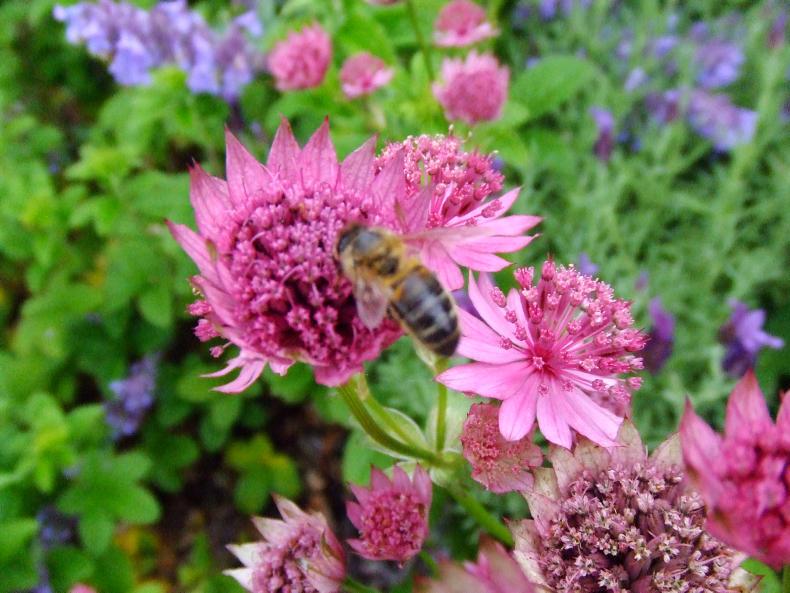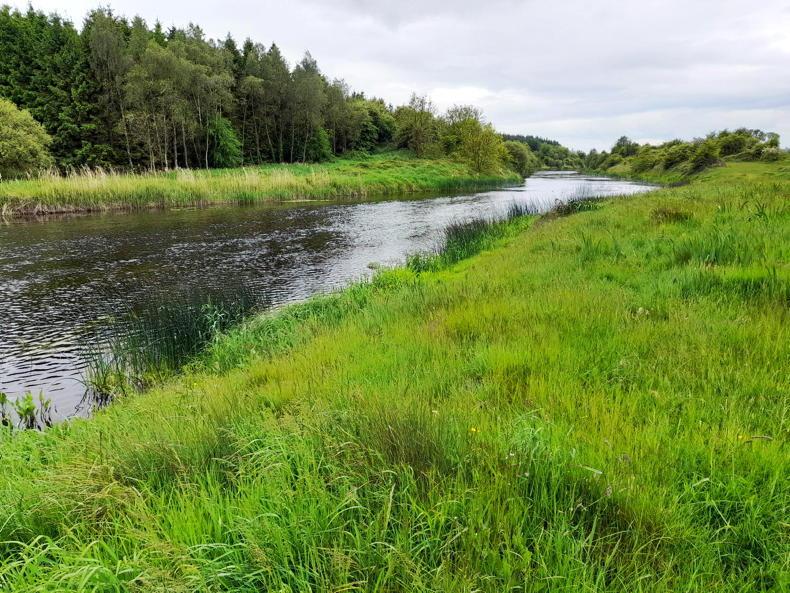Now that we beekeepers are out of the woods with regard to colony losses, we can get an actual account on the number of honeybee colonies that have the potential to produce a good crop of honey. In this regard, we can start to implement our weekly plan to bring about success.
In beekeeping terms, we tend to think of success as the amount of honey produced by the beginning of August.
The real success is hidden, or at least hidden for a given length of time. It will be found in the amount of blooms visited by bees, be they weeds or propagated plants and trees.
Each visit is one of vital importance in nature, since it is during these that the transfer of pollen grains from flower to flower takes place.
The transfer of pollen from flower to flower of the same species, such as an apple bloom, is known as pollination.
The bee is drawn to the flower by the reward of nectar from the nectary, which lies within the flower. While in the process of sucking up a feed of nectar, her body hair becomes covered in pollen grains from the stamens (the male part) of the flower. This is repeated as she visits each flower.
When one looks across the fields or hedgerows as the summer goes by, various plants will have their flowering period
However, during these visits, pollen grains from previous blooms fall from her body and stick to the stigma (the female part) of the flower. This process is known as pollination.
A pollen grain that adheres to the stigma will form a pollen tube, which ends up in the ovary, where fertilisation takes place and so a new seed is formed. In the case of the apple blossom, the result will be a new apple.
When one looks across the fields or hedgerows as the summer goes by, various plants will have their flowering period.
It will be later on when the seeds are produced and ripen, that the work of the pollinator is to be seen.
These seeds will produce next year’s food supply for bees and perhaps forage or shelter for animals.
The nectar gathered, while visiting flowers, is taken back to the beehive where bees process and turn it into honey.
The production of honey by bees is one food crop that has no negative impact on soil, plant or the environment.
It has in fact a positive impact, since the bee gathers nectar and in turn supplies a pollination service.
There is greater awareness now of the value of bees as pollinators as well as respect for wild vegetation.
The vast numbers of honey bees out foraging during this period, working alongside the bumblebees and the many other wild bee species, will hum their way through summer
Variety is the spice of life and variety of pollens play a very important part in bee health. Bees use pollen as food, particularly in the rearing of young bees.
With improving knowledge, mistakes of the past are not repeated and better ways of supporting ourselves through an improved environment will ensure a sustainable future.
Colonies of honeybees reach their full strength from mid-May to mid-June.
The vast numbers of honey bees out foraging during this period, working alongside the bumblebees and the many other wild bee species, will hum their way through summer, gladly doing the most important job in nature.
Read more
Beekeeping: Unbeatable heather honey
Beekeeping: Keeping the honeybee alive
Now that we beekeepers are out of the woods with regard to colony losses, we can get an actual account on the number of honeybee colonies that have the potential to produce a good crop of honey. In this regard, we can start to implement our weekly plan to bring about success.
In beekeeping terms, we tend to think of success as the amount of honey produced by the beginning of August.
The real success is hidden, or at least hidden for a given length of time. It will be found in the amount of blooms visited by bees, be they weeds or propagated plants and trees.
Each visit is one of vital importance in nature, since it is during these that the transfer of pollen grains from flower to flower takes place.
The transfer of pollen from flower to flower of the same species, such as an apple bloom, is known as pollination.
The bee is drawn to the flower by the reward of nectar from the nectary, which lies within the flower. While in the process of sucking up a feed of nectar, her body hair becomes covered in pollen grains from the stamens (the male part) of the flower. This is repeated as she visits each flower.
When one looks across the fields or hedgerows as the summer goes by, various plants will have their flowering period
However, during these visits, pollen grains from previous blooms fall from her body and stick to the stigma (the female part) of the flower. This process is known as pollination.
A pollen grain that adheres to the stigma will form a pollen tube, which ends up in the ovary, where fertilisation takes place and so a new seed is formed. In the case of the apple blossom, the result will be a new apple.
When one looks across the fields or hedgerows as the summer goes by, various plants will have their flowering period.
It will be later on when the seeds are produced and ripen, that the work of the pollinator is to be seen.
These seeds will produce next year’s food supply for bees and perhaps forage or shelter for animals.
The nectar gathered, while visiting flowers, is taken back to the beehive where bees process and turn it into honey.
The production of honey by bees is one food crop that has no negative impact on soil, plant or the environment.
It has in fact a positive impact, since the bee gathers nectar and in turn supplies a pollination service.
There is greater awareness now of the value of bees as pollinators as well as respect for wild vegetation.
The vast numbers of honey bees out foraging during this period, working alongside the bumblebees and the many other wild bee species, will hum their way through summer
Variety is the spice of life and variety of pollens play a very important part in bee health. Bees use pollen as food, particularly in the rearing of young bees.
With improving knowledge, mistakes of the past are not repeated and better ways of supporting ourselves through an improved environment will ensure a sustainable future.
Colonies of honeybees reach their full strength from mid-May to mid-June.
The vast numbers of honey bees out foraging during this period, working alongside the bumblebees and the many other wild bee species, will hum their way through summer, gladly doing the most important job in nature.
Read more
Beekeeping: Unbeatable heather honey
Beekeeping: Keeping the honeybee alive









SHARING OPTIONS